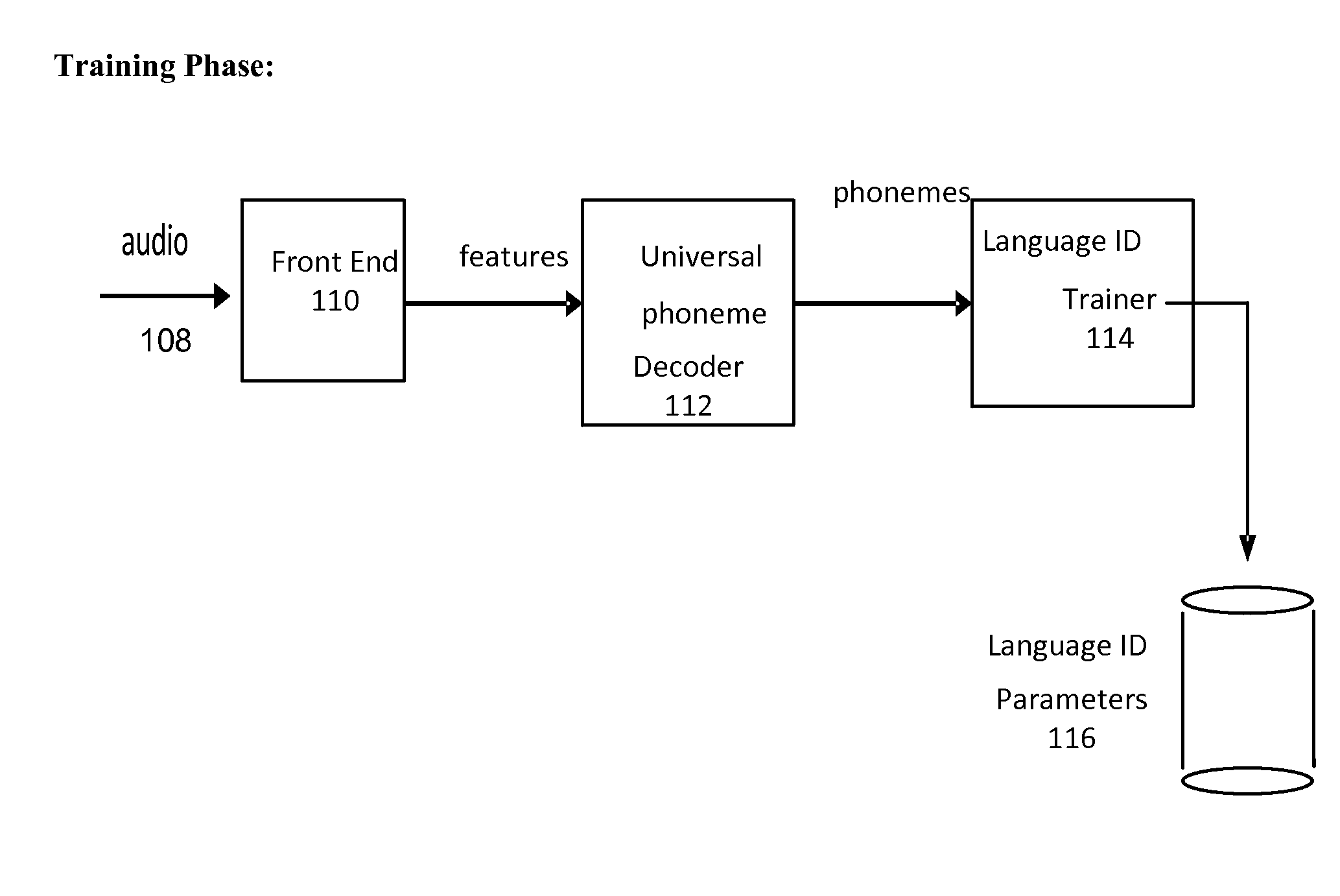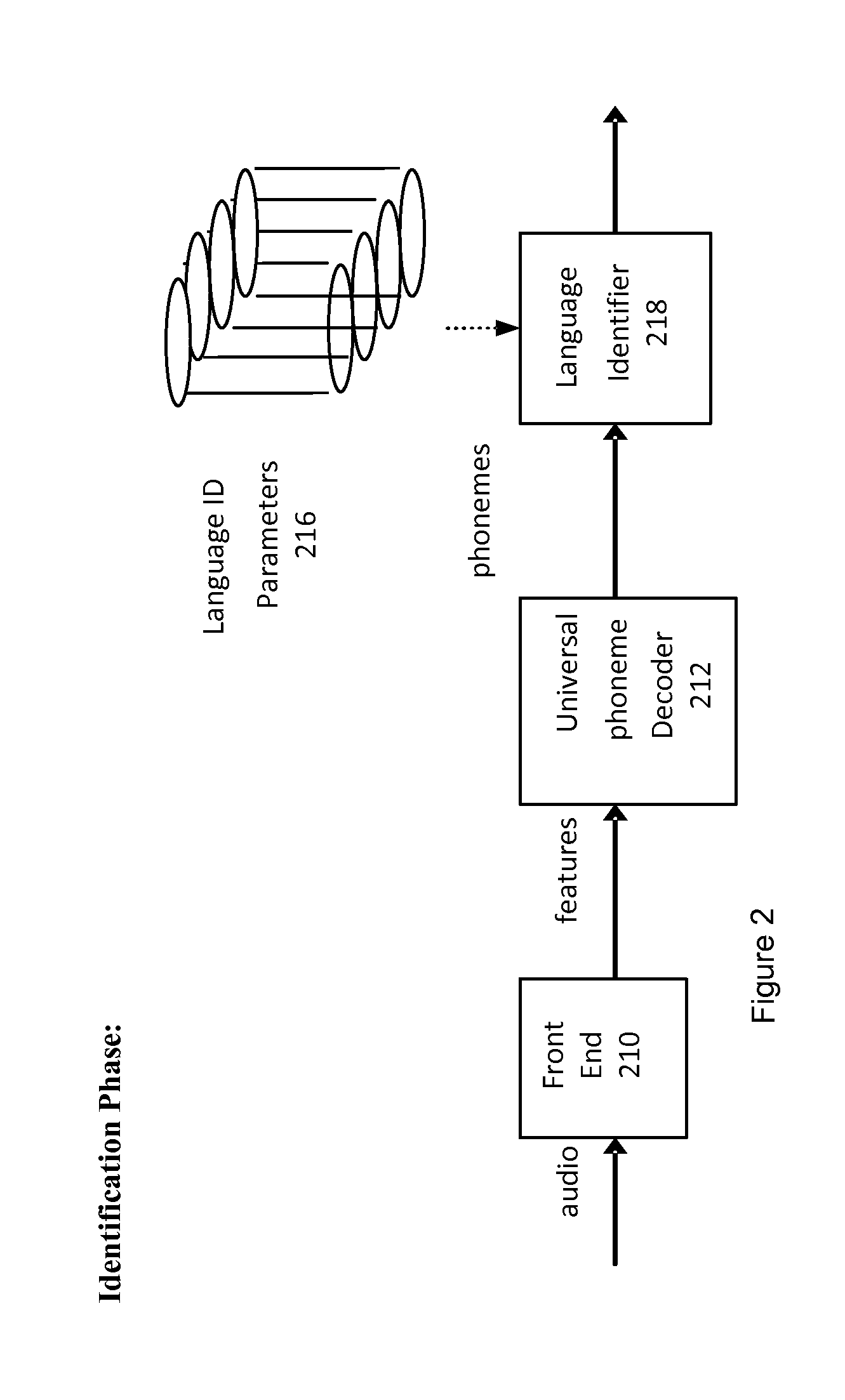Automatic spoken language identification based on phoneme sequence patterns
a phoneme sequence and automatic technology, applied in the field of language identification, can solve the problem of being near impossible to predict ahead of time when
- Summary
- Abstract
- Description
- Claims
- Application Information
AI Technical Summary
Benefits of technology
Problems solved by technology
Method used
Image
Examples
Embodiment Construction
[0012]In the following description, numerous specific details are set forth, such as examples of specific data signals, named components, connections, types of formulas, etc., in order to provide a thorough understanding of the present invention. It will be apparent, however, to one of ordinary skill in the art that the present invention may be practiced without these specific details. In other instances, well known components or methods have not been described in detail but rather in a block diagram in order to avoid unnecessarily obscuring the present invention. Further specific numeric references such as first input, may be made. However, the specific numeric reference should not be interpreted as a literal sequential order but rather interpreted that the first input is different than a second input. Further steps performed in one embodiment may also be combined with other embodiments. Thus, the specific details set forth are merely exemplary. The specific details may be varied f...
PUM
 Login to View More
Login to View More Abstract
Description
Claims
Application Information
 Login to View More
Login to View More - R&D
- Intellectual Property
- Life Sciences
- Materials
- Tech Scout
- Unparalleled Data Quality
- Higher Quality Content
- 60% Fewer Hallucinations
Browse by: Latest US Patents, China's latest patents, Technical Efficacy Thesaurus, Application Domain, Technology Topic, Popular Technical Reports.
© 2025 PatSnap. All rights reserved.Legal|Privacy policy|Modern Slavery Act Transparency Statement|Sitemap|About US| Contact US: help@patsnap.com



